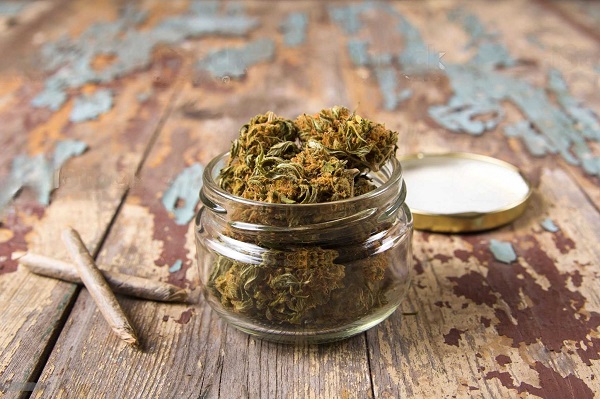The cannabis market has undergone a dramatic transformation over the past decade, driven by shifting legal landscapes, evolving consumer preferences, and an increasing acceptance of cannabis as a legitimate product for both medicinal and recreational use. In this dynamic environment, Native reserve dispensaries have emerged as vital players, uniquely positioned to offer a diverse range of cannabis products while also promoting cultural heritage and community empowerment. This article explores the pivotal role of Native reserve dispensaries in the evolving cannabis market and how they contribute to a more inclusive and diverse industry.
1. Cultural Significance and Historical Context
Cannabis has long been intertwined with Indigenous cultures across North America. Historically, many Indigenous peoples utilized cannabis for medicinal and spiritual purposes, viewing it as a sacred plant. Today, as legalization spreads, Native reserve dispensaries are reclaiming this historical connection by integrating traditional practices into modern cannabis retail. This cultural significance helps foster a deeper understanding of cannabis and its uses, providing consumers with not just a product but a story and a heritage.
a. Preservation of Indigenous Knowledge
Native reserve dispensaries often prioritize the preservation of Indigenous knowledge related to cannabis cultivation and usage. By employing traditional growing techniques and methods that respect the land, these dispensaries can cultivate high-quality cannabis that reflects the values and practices of Indigenous communities. This approach not only enhances the authenticity of their products but also reinforces the importance of traditional ecological knowledge in contemporary agricultural practices.
2. Economic Empowerment and Community Development
The rise of Native reserve dispensaries is also a significant economic development opportunity for Indigenous communities. For many, cannabis sales represent a chance to generate revenue, create jobs, and fund community programs. This economic empowerment can have far-reaching benefits, improving infrastructure, healthcare, and education within these communities.
a. Job Creation and Training Opportunities
As Native reserve dispensaries grow, they create a range of job opportunities for community members, from cultivation and production to retail and management positions. Many dispensaries also offer training programs to help individuals develop skills necessary for successful careers in the cannabis industry. By investing in workforce development, these dispensaries not only contribute to economic growth but also empower Indigenous individuals with valuable skills.
b. Funding Community Initiatives
Revenue generated from cannabis sales can be reinvested into community initiatives, such as education, health services, and cultural preservation programs. This self-sustaining model allows Indigenous communities to address their specific needs and priorities without relying solely on external funding sources, thereby promoting long-term resilience and autonomy.
3. Legal Autonomy and Regulatory Advantages
Native reserve dispensaries operate under a unique legal framework that allows them to navigate cannabis regulations differently than non-Indigenous dispensaries. This legal autonomy can provide significant advantages, including the ability to establish their own regulations regarding cultivation, distribution, and sales.
a. Sovereignty and Self-Regulation
Many Native reserves have chosen to implement their own cannabis regulations, which can differ significantly from state or provincial laws. This sovereignty enables Indigenous communities to control their cannabis markets, ensuring that they align with their cultural values and community needs. By establishing self-regulatory frameworks, Native reserve dispensaries can create an environment that prioritizes consumer safety and product quality while fostering innovation.
b. Tax Advantages
In some cases, Native reserve dispensaries may operate with fewer tax burdens than their non-Indigenous counterparts. This can result in lower prices for consumers and enhanced profitability for dispensaries, allowing them to reinvest in their communities and continue to grow their businesses. The potential for tax exemptions also makes Native reserve dispensaries an attractive option for price-sensitive consumers looking for quality cannabis products.
4. Diverse and Unique Product Offerings
One of the hallmarks of Native reserve dispensaries is their focus on offering unique and diverse cannabis products. Many of these dispensaries take pride in their artisanal approach to cultivation, using organic and sustainable practices that produce high-quality cannabis strains.
a. Exclusive Strains and Craft Cannabis
Native reserve dispensaries often cultivate exclusive strains that reflect the terroir of their lands and the traditional growing practices of their communities. These unique strains may not be available at conventional dispensaries, attracting consumers seeking distinct flavors and effects. Additionally, many Native reserve dispensaries emphasize craft cannabis, prioritizing quality over quantity and ensuring that their products meet high standards of excellence.
b. Innovative Products
In addition to traditional cannabis flowers, Native reserve dispensaries are increasingly expanding their product lines to include edibles, concentrates, and topicals. By embracing innovation, these dispensaries cater to a diverse consumer base that seeks various consumption methods and experiences. The integration of traditional Indigenous ingredients or methods into these products can also enhance their appeal and cultural significance.
5. Community-Focused Customer Experience
Shopping at a Native reserve dispensary is often more than just a transactional experience; it is an opportunity for cultural engagement and education. Many dispensaries prioritize creating a welcoming and informative environment for their customers.
a. Culturally Relevant Education
Staff members at Native reserve dispensaries are often knowledgeable about the cultural significance of cannabis and its traditional uses. This expertise enables them to provide customers with educational resources that go beyond product descriptions. By fostering a deeper understanding of cannabis, these dispensaries help demystify the plant and encourage responsible consumption.
b. Building Community Relationships
Native reserve dispensaries often prioritize building relationships within their communities and beyond. Many dispensaries host events, workshops, and educational sessions to engage with both local residents and visitors. By fostering a sense of community, these dispensaries enhance their role as hubs for social interaction and cultural exchange.
6. Challenges and Opportunities Ahead
While the rise of Native reserve dispensaries presents many opportunities, challenges remain. Navigating the complexities of legal regulations, competition from non-Indigenous dispensaries, and ongoing stigma surrounding cannabis use can pose significant hurdles.
a. Regulatory Uncertainty
As laws around cannabis continue to evolve, Native reserve dispensaries must remain adaptable to changing regulations. Ensuring compliance with both Indigenous and broader governmental frameworks is crucial for their long-term success. Additionally, ongoing dialogues with policymakers can help ensure that Indigenous perspectives are considered in future legislation.
b. Promoting Awareness and Acceptance
As the cannabis market grows, so does the need for public education and acceptance. Native reserve dispensaries have an opportunity to take on a leadership role in promoting responsible cannabis use and addressing misconceptions about the plant. By highlighting the cultural, economic, and health benefits of cannabis, these dispensaries can help shape a more inclusive narrative around its use.
7. Conclusion
Native reserve dispensaries play an increasingly important role in the evolving cannabis market, blending cultural heritage, economic empowerment, and innovative practices. As these dispensaries continue to grow and adapt, they will shape the future of the cannabis industry, providing consumers with unique products while fostering Indigenous sovereignty and community resilience. By prioritizing education, cultural engagement, and sustainability, Native reserve dispensaries are not only redefining the cannabis retail experience but also paving the way for a more inclusive and diverse cannabis landscape.





